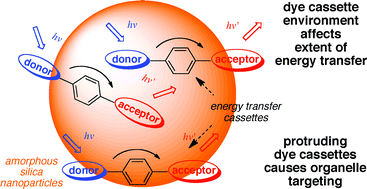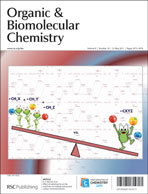Energy transfer cassettes in silicananoparticles target intracellular organelles†
Abstract
Lipophilic energy transfer cassettes like 1 and 2 are more conveniently synthesized than the corresponding hydrophilic compounds, but they are not easily used in aqueous media. To overcome the latter issue, cassettes 1 and 2 were separately encapsulated in


 Please wait while we load your content...
Please wait while we load your content...